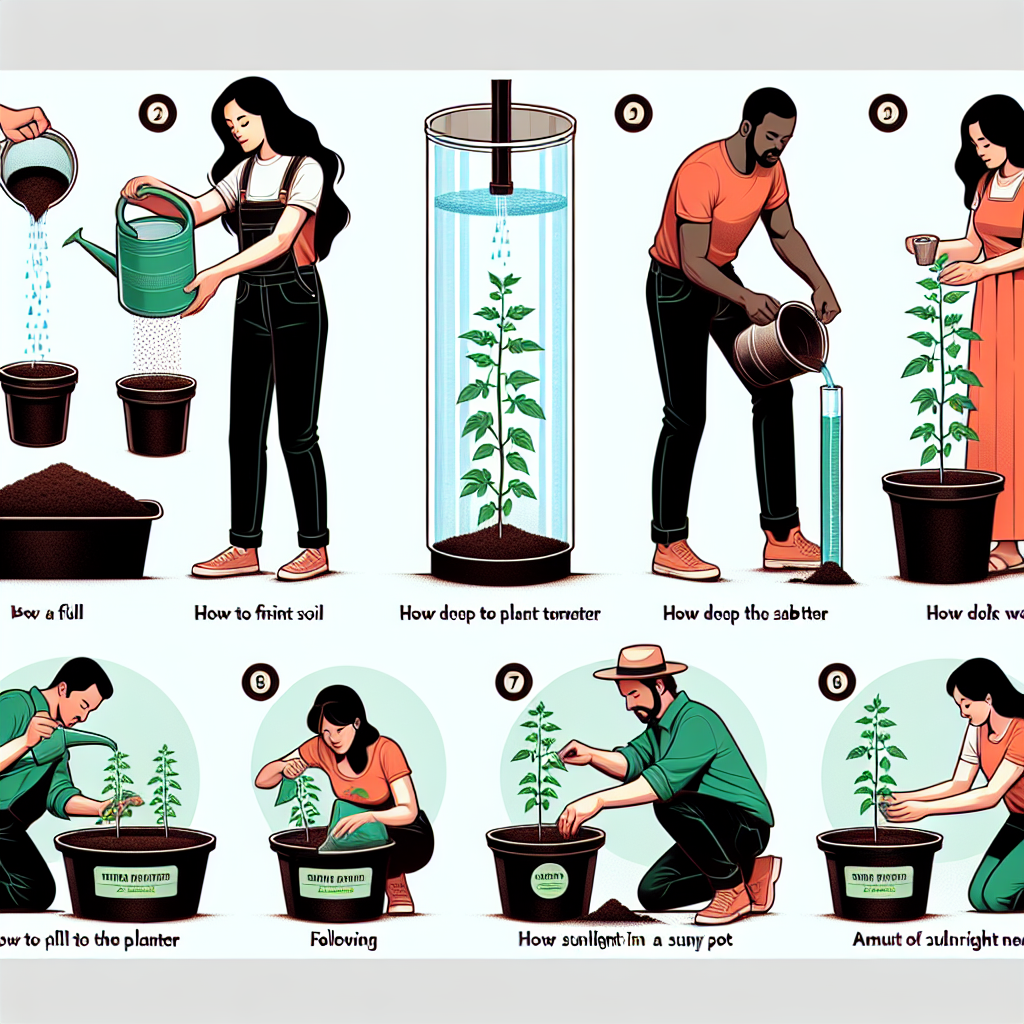
How to use tomato planters
How to Use Tomato Planters: A Comprehensive Guide
Growing tomatoes is a rewarding experience, but achieving a bountiful harvest requires more than just seeds and soil. Understanding how to properly use tomato planters is essential for every enthusiast. Whether you're a beginner or an experienced gardener, selecting the right planter and employing the right techniques can significantly impact your tomato-growing success.
Why Choose Planters for Tomatoes?
Tomato planters offer numerous advantages, especially for those with limited garden space or for urban gardeners. Here are some benefits:
- Space-efficient: Planters allow you to grow tomatoes in tight spaces, such as balconies, patios, or small yards.
- Better control over soil quality: With planters, you can fill them with high-quality soil specifically designed for tomatoes.
- Improved drainage: Many planters are designed with drainage holes to prevent waterlogging, a common issue when growing tomatoes.
- Mobility: You can move planters around to maximize sunlight exposure or reduce water loss.
What Types of Tomato Planters are Available?
Choosing the right type of planter is crucial for your tomatoes' growth. Here are some popular types:
- Pots: Standard pots are versatile and available in various sizes. Choose a pot that is at least 5 gallons for optimal growth.
- Raised beds: Raised beds offer ample space for root development and improved drainage.
- Vertical planters: Perfect for limited spaces, these multi-tier planters allow you to grow more tomatoes vertically.
- Fabric planters: These breathable planters promote healthy root growth by preventing overwatering.
How to Choose the Right Size for Your Tomato Planter
The size of your planter can significantly influence your tomato plants' success. Here are some tips:
- For smaller varieties like cherry tomatoes, a planter of at least 2-3 gallons is usually sufficient.
- For larger varieties, such as beefsteak tomatoes, opt for a 5-gallon planter or larger.
- Consider the growth habit: determinate varieties may thrive in smaller spaces, while indeterminate varieties need more room.
Setting Up Your Tomato Planter
Once you’ve selected your tomato planter, it’s time to set it up for success. Follow these steps:
- Select quality soil: Use a well-draining potting mix enriched with compost or organic matter.
- Add drainage material: Place small rocks or gravel at the bottom of the planter to ensure proper drainage.
- Fill the planter: Fill your planter with the soil mix, leaving about an inch of space from the top.
- Position the planter: Ensure that your planter gets at least 6-8 hours of sunlight each day.
Planting Your Tomatoes
Now that you’ve set up your planter, it’s time to plant your tomatoes. Here’s how:
- Choose healthy seedlings: Look for robust seedlings at your local nursery or start your own from seeds indoors.
- Harden off seedlings: Gradually acclimatize your plants to outdoor conditions over a week to prevent shock.
- Plant deeply: When planting, bury the tomato up to its first set of leaves to encourage a stronger root system.
- Space appropriately: If planting multiple tomatoes, ensure sufficient space between each for airflow (about 18-24 inches apart).
Watering Your Tomato Planter
Proper watering is crucial for healthy tomato plants. Here are some tips:
- Water thoroughly: Ensure the soil is moist but not soggy; aim for consistency in moisture.
- Watering schedule: Generally, watering 2-3 times a week is ideal, but adjust based on climate and plant size.
- Consider drip irrigation: This method delivers moisture directly to the plant's roots, reducing evaporation.
Feeding Your Tomato Plants
Fertilization is a vital step in ensuring that your tomatoes thrive in planters. Here’s how:
- Choose a balanced fertilizer: Look for a fertilizer with an N-P-K ratio like 5-10-10 for optimum flowering and fruiting.
- Organic options: Consider compost, fish emulsion, or worm castings for natural nutrition.
- Frequency: Fertilize every 4-6 weeks during the growing season, adjusting based on plant growth.
Pest and Disease Management
Keeping your tomatoes healthy is key to a successful harvest. Here’s how to manage common issues:
- Regular inspections: Check plants frequently for signs of pests or disease.
- Companion planting: Grow herbs or flowers alongside tomatoes to repel pests naturally.
- Organic treatments: Use neem oil or insecticidal soap for pest control without harming your plants.
Supporting Your Tomato Plants
Tomatoes can become heavy with fruit, so providing support is essential. Here are common methods:
- Cages: Circular wire cages can provide a sturdy base for indeterminate varieties.
- Stakes: Drive stakes into the ground near the plants and tie the stems loosely to prevent breakage.
- Trellises: Ideal for vertical growing, trellises allow for excellent air circulation and light exposure.
Harvesting Your Tomatoes
After nurturing your tomato plants, it’s time to enjoy the fruits of your labor. Here’s how to effectively harvest:
- Timing: Harvest when the tomatoes are fully colored and slightly firm to the touch.
- Technique: Use sharp scissors or pruning shears to cut the stem above the calyx for minimal damage.
- Store properly: Keep harvested tomatoes at room temperature away from direct sunlight for optimal flavor.
Conclusion
Understanding how to use tomato planters is essential for a successful gardening experience. By selecting the right planter, preparing properly, and maintaining care throughout the growing season, you can enjoy abundant harvests of juicy, homegrown tomatoes. So, roll up your sleeves, gather your supplies, and get ready to reap the flavorful rewards of your hard work!
By Guest, Published on September 21st, 2024